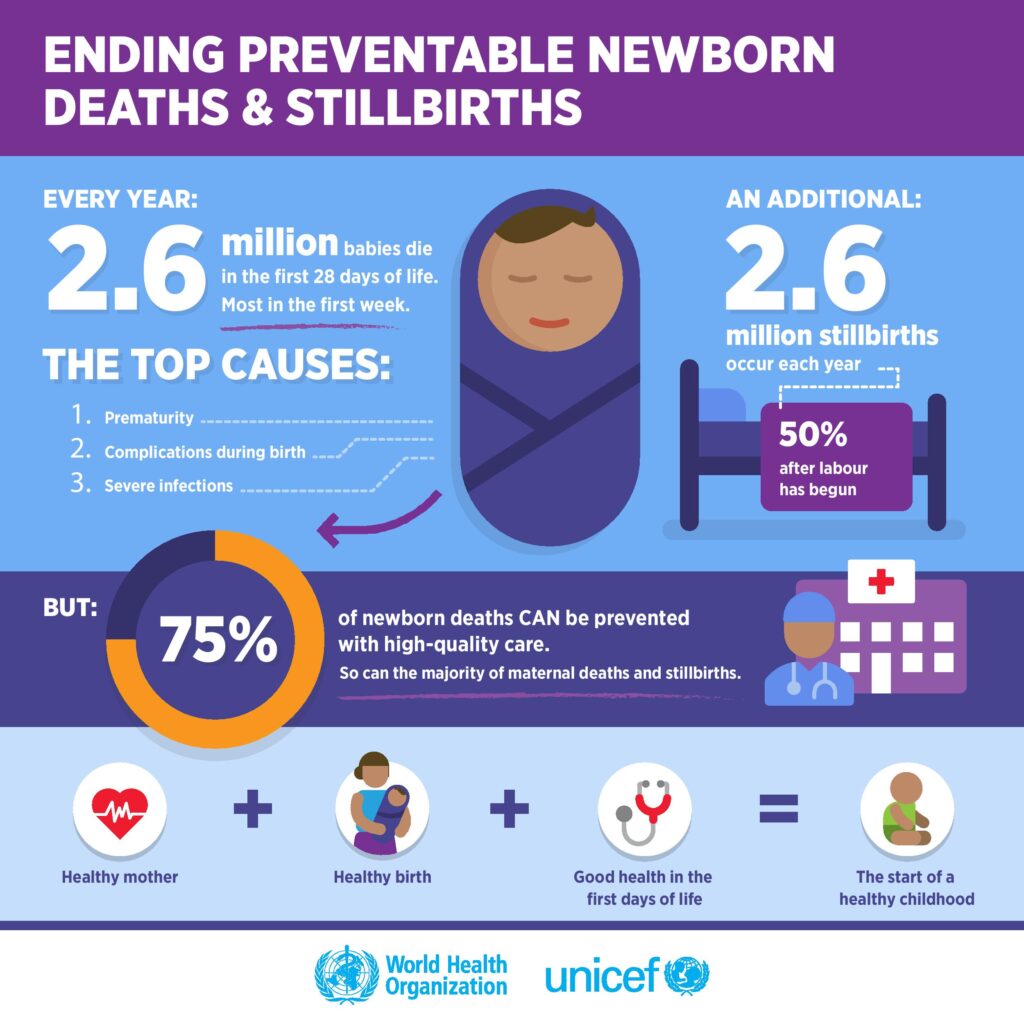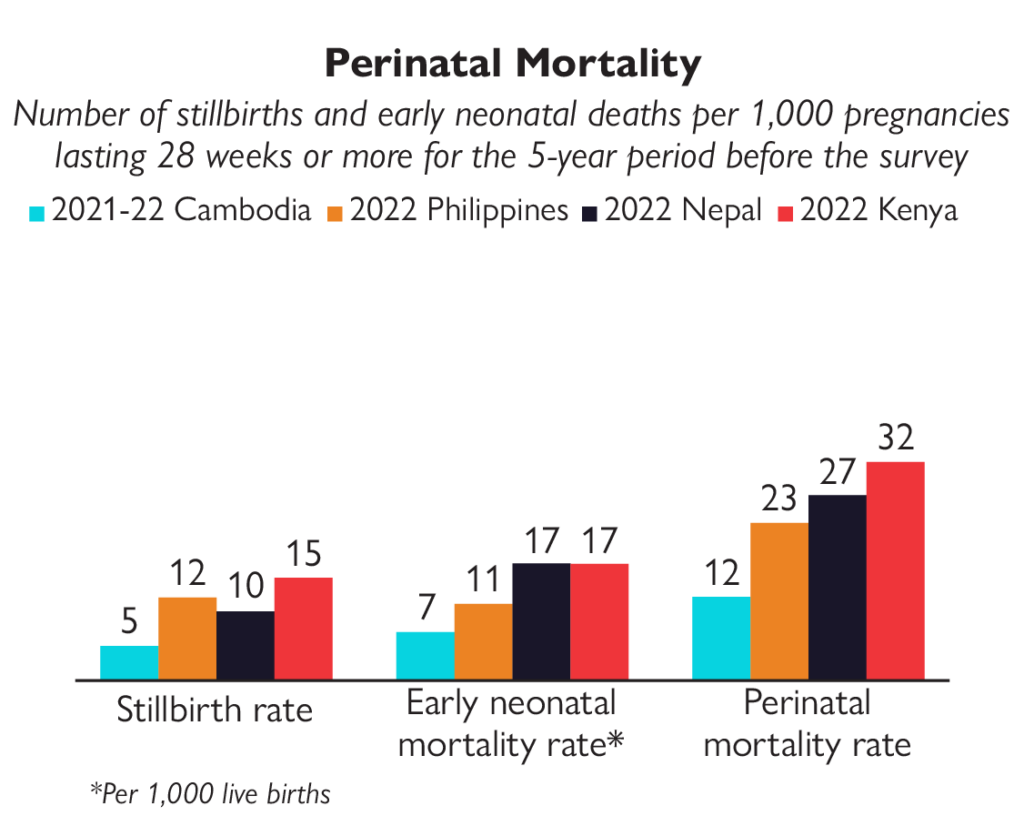Fertility, Mortality, & Migration Round-up in Honor of World Population Day 2023

July 11th is World Population Day. To celebrate, we are going back to basics with highlights from the main drivers of population change: births, deaths, and migration. How did The DHS Program evolve from the World Fertility Survey and how have we tracked the quality of fertility data over the last 50 years? What changes have been made in DHS-8 to improve perinatal mortality data? What data do DHS Program surveys collect to enable the study of migration? Read on to learn more.
Fertility
The DHS Program grew out of the World Fertility Survey (WFS). In 2022, The DHS Program celebrated USAID’s 50-year commitment to high-quality data collection and evidence-based decision making. Tom Pullum, The DHS Program’s former Senior Advisor for Research and Analysis, shares his experiences working on WFS and the history behind the name “Final Report” in the clip below.
In this video, Tom Pullum discusses his interest in quantitative measurement and indicator development, his work in evaluating fertility and mortality data quality, and how DHS Program data are validated.
Between working on WFS and his time at The DHS Program, Tom Pullum used WFS and DHS Program data in his career as a professor. He discusses teaching graduate students how to construct measures of fertility from survey data in his classes on Demographic Methods, including the different kinds of fertility rates that can be calculated from DHS Program data.
Mortality
Worldwide, newborns represent nearly half of deaths among children under age 5. Having more complete data about early deaths is essential to achieve USAID’s objective of reducing preventable child and maternal mortality in 25 priority countries to 12% of total deaths or lower by 2030. More complete data allow for better targeting of lifesaving interventions like family planning, antenatal, delivery, & postnatal care, nutrition services, routine immunization, and sick child care.
DHS-8 final reports now present the stillbirth rate and the early neonatal mortality rate, in addition to the perinatal mortality rate. This was made possible by the switch to a pregnancy history from a birth history in the DHS-8 core questionnaires.
- Stillbirth rate: the number of stillbirths per 1,000 pregnancies lasting 28 weeks or more.
- Early neonatal mortality rate: the number of deaths to children age 0-6 days per 1,000 live births.
- Perinatal mortality rate: the number of stillbirths plus the number of early neonatal deaths per 1,000 pregnancies lasting 28 weeks or more.
The figure below compares the stillbirth, early neonatal mortality, and perinatal mortality rates from the recently released 2021-22 Cambodia DHS, 2022 Philippines DHS, 2022 Nepal DHS, and 2022 Kenya DHS. In all four countries, the early neonatal mortality rate is higher than the stillbirth rate. The perinatal mortality rate ranges from 12 deaths per 1,000 pregnancies lasting 28 weeks or more in Cambodia to 32 deaths in Kenya.
Migration
In 2005, it was estimated that nearly 1 in 7 people on the planet were migrants. Most of these were internal migrants, having moved within a country. Did you know that with DHS Program data, the impact of internal migration on health outcomes can be explored? DHS-8 surveys include questions on previous place of residence and the number of years the respondent has lived in their current place of residence.
The recently released 2022 Kenya DHS highlights that over half of Kenyan women are internal migrants; 55% were born outside their current place of residence within Kenya and 2% were born outside Kenya. Fewer Kenyan men have migrated: only 36% were born outside their current place of residence within Kenya and 1% of men were born outside of Kenya. Rural to urban is the most common type of migration among both women and men in Kenya, followed by urban to urban migration.
Questions on previous place of residence allow researchers to compare health behaviors and outcomes among internal migrants and non-migrants, or among different types of migrants (rural to urban and urban to rural), to better understand the impact of migration on health access and utilization. An analytical study coming out later this year will explore these questions among adult women internal migrants in 15 countries with DHS Program surveys.
Births, deaths, and migration contribute to population change and can influence the shape of a country’s population pyramid. Test your population knowledge by taking the 2023 edition of The DHS Program’s #PopPyramid quiz.
The DHS Program’s #PopPyramid Quiz, 2023 edition
For World Population Day, test your world population knowledge from recently
published Demographic and Health Surveys (DHS). Hint: use www.statcompiler.com/en/ to explore indicators and find the answers.

Feature image: © Ruchaneek / Adobe Stock





I need the report on pdf.
Can you give me?
Also I need some literature about demographic dividend, please help
You can find PDFs of DHS survey final reports, analytical studies, and more at DHSprogram.com.